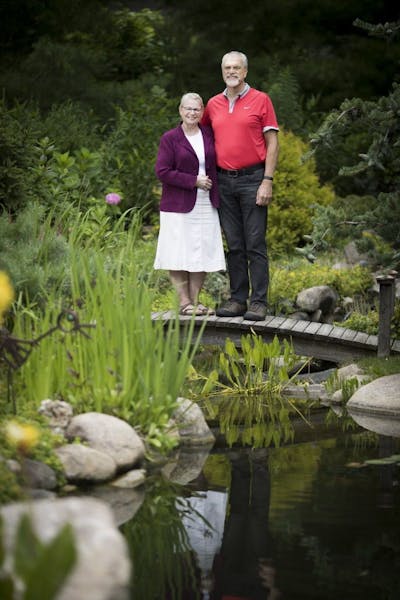Take cues from your setting. "Let nature show you what's supposed to be there," said Karen Koenig. Look at the land and the trees, then try to accentuate them with smaller plants. "A lot of my plants have planted themselves."
Move plants freely. "Any plant in the wrong place is a weed and has to go," she said. She doesn't destroy plants that fail to thrive or don't look quite right where they're planted. Instead, she finds another place for them. "It's moving the pieces," she said.
Use hardy, spreading native plants to fill in bare areas, such as bee balm. "They get big if they're happy," she said, pointing to a large clump ablaze with crimson color. "That one was huge, and it spreads. If you want to cover an area, bee balm is fabulous."
Try spreading ground-cover plants in place of mulch. The look is softer and more lush, and it's less labor-intensive, she noted. She relies on pachysandra, astilbe, moneywort and bugleweed to create a carpet of color and texture between her taller plants.
"Don't sweat the small stuff," she said. That includes rabbits. She doesn't bother trying to keep them out of the garden, provided they don't become excessively voracious. "Until you've taken 10 percent of my garden," she cautions them, "it's yours."
Kim Palmer
